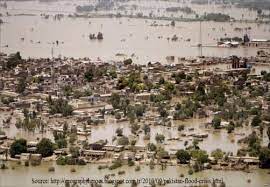This may require a specialized insurance business to be set up by one of the PSU general insurance companies with subsidized premiums for disaster-prone areas, the panel said
The government may need to consider how to provide insurance for projects that have to deal with extreme weather such as glacial lake outbursts. This happened recently to the Teesta III dam in Sikkim.
New Delhi:
The Parliamentary Standing Committee on Finance has recommended setting up special mechanisms to manage a plethora of rising natural catastrophes in the country.
The government should explore options as to how homes and properties, especially those of economically vulnerable groups, can be insured in areas susceptible to catastrophic damages with the aid of Central/State Government, proposed the Committee headed by BJP MP Jayant Sinha.
As per the SBI Research ECOWRAP an average Indian is roughly insured for only 8% of what is desired, leaving an insurance gap of 92%, while the global average for insurance protection is 54%. The report has also highlighted that in the MSME Sector, only 5% of the units are insured in the country; however, this sector needs a much higher level of protection.
This may require a specialised insurance business to be set up by one of the PSU general insurance companies with subsidized premiums for disaster-prone areas, the Committee said.
Similarly, the government may need to consider how to provide insurance for projects that have to deal with extreme weather such as glacial lake outbursts. This happened recently to the Teesta III dam in Sikkim. These additional insurance products will require extensive consultation with general insurance companies, reinsurers, and enterprises that are facing such risks.
The Parliamentary Standing Committee on Finance In its report- Performance review and regulation of the insurance sector- tabled in the Lok Sabha on Tuesday, has has made a set of recommendations to make insurance more affordable and improve the functioning of the Indian insurance sector.
The committee proposed that IRDAI should set up a Working Group with all concerned stakeholders to examine all these issues in detail and then provide appropriate policy recommendations to address this important this issue, it said.
Such insurance businesses have been established in many other areas, such as Florida which is subject to regular hurricane damage.
“By disaster type, India is marred mostly by floods.Almost 41% of disasters occurred in the form of floods. The committee feels that the natural disasters can cause lot of damage to the infrastructure in India, a country that faces many natural hazards because of its demographic and geographic features. Also, many houses are not safe enough to resist earthquakes and floods,” it said.
The panel said that India has been ranked three after the US and China, in recording the highest number of natural disasters since 1900.
The panel has also elaborated that there is an ongoing study on comprehensive multi hazard risk finance strategy by National Disaster Management Authority(NDMA), with aim to:
-To develop a database of economic and financial losses caused by selected hazards of earthquake, cyclone, and flood together with a report describing the data collected and its limitations.
-To develop catastrophic risk profiles for the selected perils of cyclone, and flood for the four states of Kerala, Uttarakhand, Orissa and Gujarat encompassing the hazard and vulnerability modules for each peril with results calibrated to historical events
-Through leveraging the output from the two above activities, to develop in conjunction with the World Bank Group, disaster risk financing and insurance strategies that include state specific disaster financing mechanisms and consider the potential benefits of risk pooling of disaster risks of multi-states.

